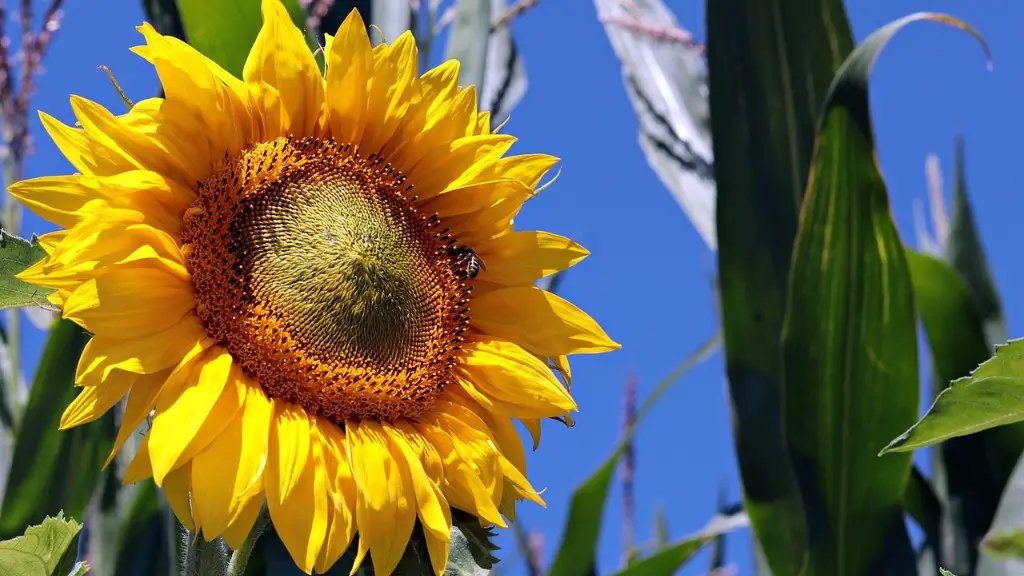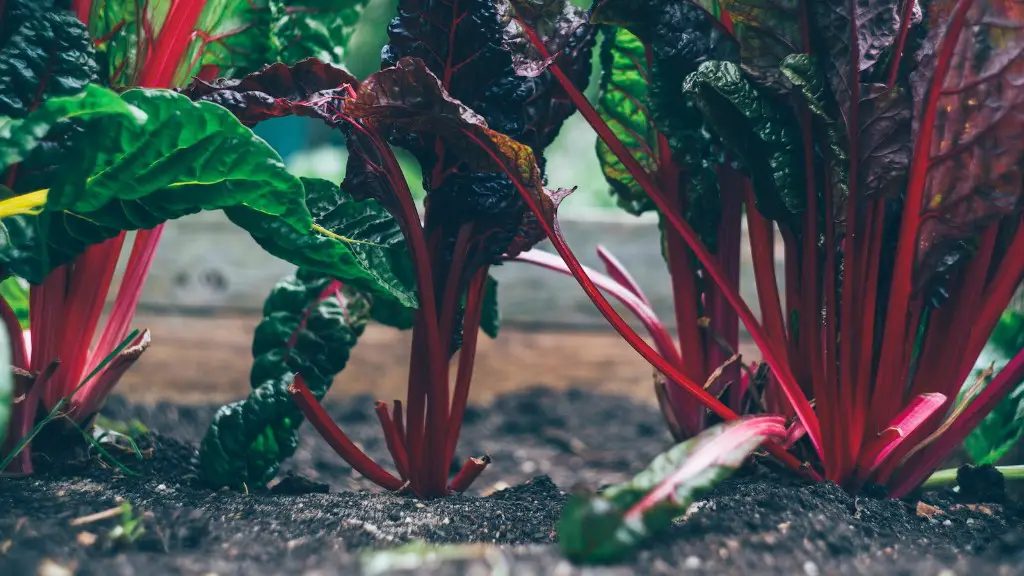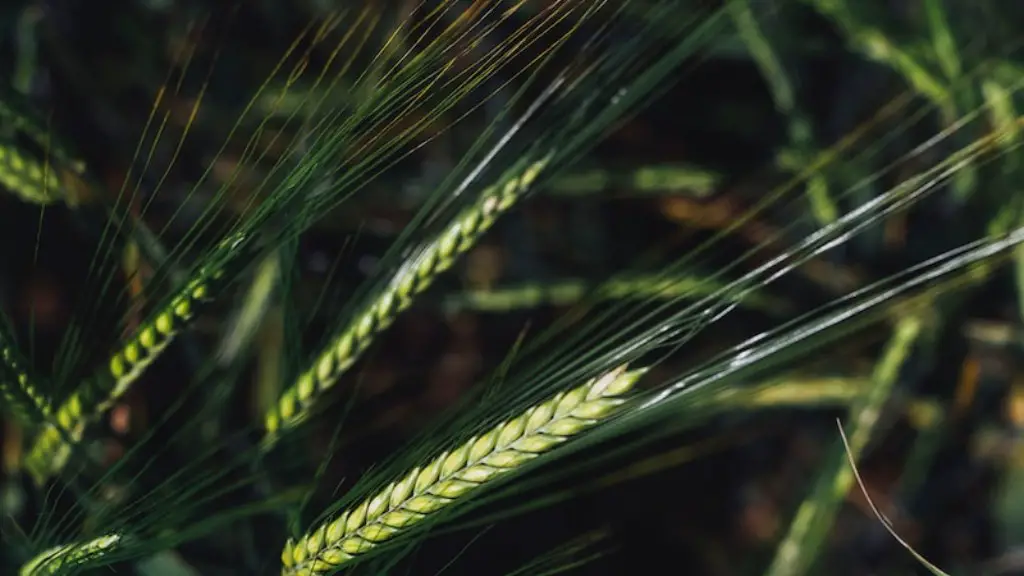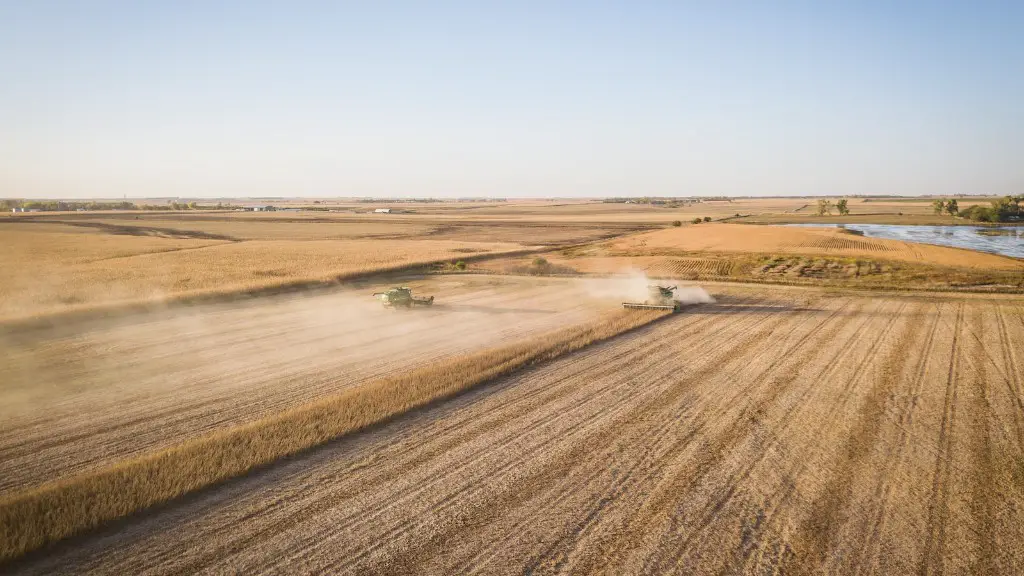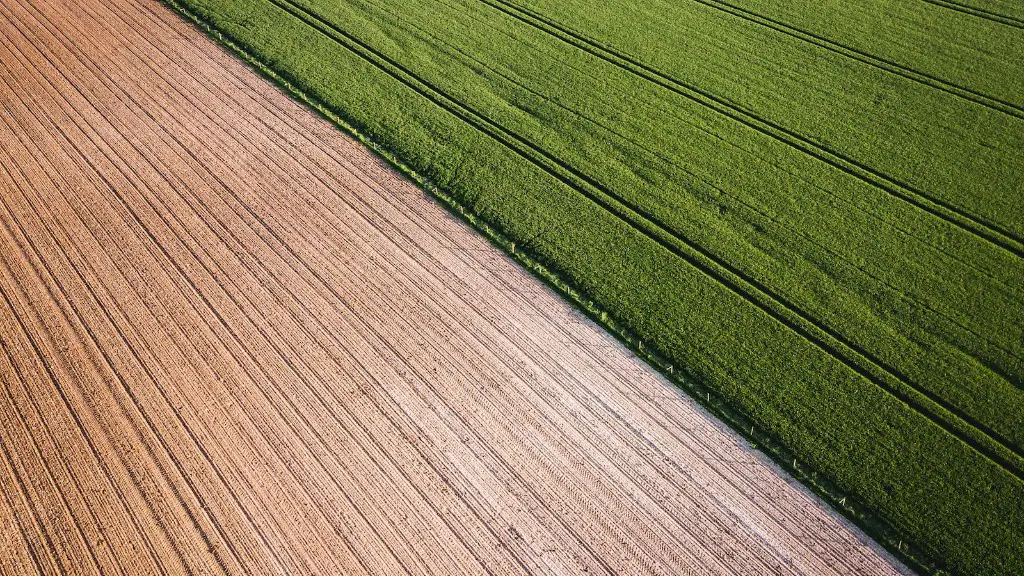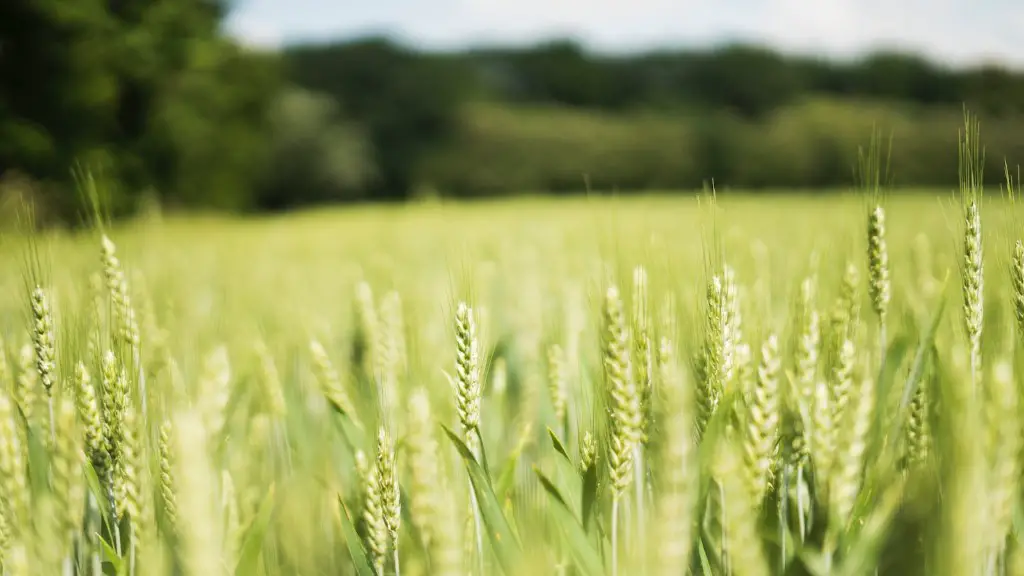Every year, topsoil is lost due to wind and water erosion. The USDA’s Natural Resources Conservation Service (NRCS) works with farmers and ranchers to address this critical issue. By adopting conservation practices, they can reduce soil erosion, improve water quality, and increase productivity.
There are a number of ways to reduce soil erosion in agriculture:
1) Use crop rotation: Incorporating a crop rotation system into your farm can reduce soil erosion by 30-50%.
2) Use cover crops: Cover crops can help reduce soil erosion by up to 70%.
3) Use of contour farming: Plowing along the contours of slopes rather than up and down can reduce soil erosion by 30-50%.
4) Use of grassed waterways: By creating grassed waterways on your farm, you can reduce soil erosion by up to 95%.
5) Use of riparian buffers: Planting trees and shrubs along waterways can reduce soil erosion by up to 50%.
What are 5 ways to prevent soil erosion?
Bare soils are particularly vulnerable to erosion, so it’s important to adapt tillage practices accordingly. Soil tillage (digging, stirring and overturning it) is one of the most practised methods of preparing the land for growing crops, but it can also lead to soil erosion if not done carefully. Overgrazing can also be a problem, so it’s important to keep an eye on grazing animals. Finally, steep slopes can also be a problem, so consider terracing them or growing a buffer strip.
Soil erosion is a major problem in many parts of the world. It can cause serious damage to crops, homes, and even human health. But there are ways to prevent it.
One way is to plant trees and plants. This is called afforestation. Trees and plants help to hold the soil in place and prevent water from washing it away.
Another way is to rotate crops. This means growing different crops in different parts of the field each year. This helps to keep the soil healthy and prevent it from being washed away.
Terrace farming is another way to prevent soil erosion. This is where the land is built up in terraces, or steps. This helps to stop water from running down the slopes and washing the soil away.
Building dams and shelterbelts can also help to prevent soil erosion. Dams help to hold back water, while shelterbelts are rows of trees or plants that help to protect the soil from the wind.
Finally, embankments can be built to help prevent soil erosion. These are walls of earth or stone that are built to hold back water.
Van Mahotsav is a national festival in India that is celebrated to promote tree planting. This is just
What are 6 farming methods that reduce soil loss
There are many techniques that can help reduce soil loss, including terracing, contour cropping, windbreaks, and no-till planting. However, it is also important to be cautious with grazing, recreational activities, and reclaiming used lands, as these can also lead to soil loss.
Mats are used to reduce erosion on steep slopes by providing a surface for the water to flow over. The mats also help to hold the soil in place on the slope. The use of rocks or stone riprap is also effective in preventing erosion on steep slopes. The contour lines help to redirect the flow of water and prevent it from flowing directly down the slope. Planting across a slope instead of vertically on it also helps to reduce erosion.
What are the 3 ways of controlling soil erosion?
The three main principles to control erosion are to use land according to its capability, protect the soil surface with some form of cover, and control runoff before it develops into an erosive force.
There are many ways to protect soil from erosion, but the best way is to keep it covered and undisturbed. Management practices such as no-till, reduced tillage, cover crops, and contour farming can reduce the threats of erosion.
What are seven ways to reduce soil erosion?
Erosion is a huge problem for farmers, and it can be tough to combat. Here are seven ideas for reducing erosion on your farm:
1. Start using minimum tillage – soon.
2. Look at the power of grass waterways.
3. Keep crop residue in the field.
4. Consider going narrower at planting time.
5. What’s the right direction to plant?
6. Don’t underestimate the power of cover crops.
With a little planning and effort, you can make a big difference in the amount of erosion on your farm. Every bit helps!
Mulch:
Mulching is one of the most effective ways to prevent soil erosion. It helps to keep the soil in place and limits the amount of water that can seep through to the underlying soil. There are a variety of mulches you can use, including wood chips, straw, and leaves.
Matting:
Weed matting or landscape matting is an effective way to control erosion on slopes. It’s a thick, woven fabric that you lay over the soil. The matting helps to hold the soil in place and keep it from washing away.
Ground Cover:
Ground cover is another plant that can help to prevent soil erosion. It covers the ground and helps to keep the soil in place. There are a variety of ground covers to choose from, including grasses, herbs, and shrubs.
Terracing:
Terracing is a way to create level areas on a slope. This helps to reduce the amount of erosion because the water is not running down the slope in one sheet. Instead, it is diverted into smaller channels.
Retaining Walls:
Retaining walls are built to hold back soil. They are often used on slopes to
What methods do farmers use to protect the soil
Cover crops are an important tool for protecting and enriching soil. They help slow erosion, control pests and diseases, and increase organic matter. The use of cover crops has also been shown to increase crop yields.
Terraced farming is a type of agriculture where fields are built on graduated slopes, using soil from one level to build up a level above it. This type of farming is often used in areas where there is a lot of rainfall, to prevent erosion and help the water flow to the crops. In addition, hillside farm fields need full crop cover to help keep the soil in place.
What strategies can farmers use to improve soil quality?
Increasing diversity in your agricultural operation can help to break disease cycles, stimulate plant growth, and provide habitat for pollinators and other organisms living in your soil. Some ways to increase diversity include planting diverse cover crops, using diverse crop rotations, and integrating livestock into your operation. By increasing diversity, you can create a more resilient agricultural operation that is better able to withstand pests, diseases, and other challenges.
Erosion control is the practice of controlling or preventing soil erosion, especially in agricultural, conservation, construction and land development applications. The everyday processes of these operations often lead to erosion and can significantly impact surrounding communities, plants and wildlife. In order to prevent these negative impacts, it is important to have proper erosion control measures in place. There are many different methods that can be used for erosion control, and the best method to use will depend on the specific situation. Some common methods include using landscaping fabric, mulch, vegetative cover, and retaining walls.
What are 3 types of soil conservation used by farmers
Conservation tillage is the practice of reducing wind and water erosion in agriculture. This can be done through a variety of practices, such as contour farming, strip cropping, windbreaks, crop rotation, cover crops, buffer strips, and grassed waterways. By using these practices, farmers can help to protect the soil and water resources on their land.
There are a number of things that farmers and gardeners can do to improve the health of their soil. By taking some simple steps, they can improve the quality of their soil, and in turn, improve the quality of their crops.
1. Plan for good soil health in fall and winter.
2. Adopt no-till practices.
3. Rotate crops each growing season.
4. Add organic matter to improve soil structure.
5. Protect soil with cover crops.
What are 4 ways to improve the agriculture?
The world’s population is expected to increase by 2.3 billion people by 2050, which means farmers will need to produce about 70% more food than they do today. One way to achieve this goal is to develop high-yield crops that are more resistant to pests and diseases and can grow in a wide range of climates.
In addition, irrigation systems need to be improved to make better use of limited water resources, and the use of fertilizers needs to be increased to boost crop yields. It is also essential to reform land ownership so that it is more productive and inclusive.
Finally, information technology can be used to better monitor and manage crops, as well as to connect farmers with markets. Genetically modified crops could also play a role in increasing food production, but more research is needed to assess their impacts.
Cover is the most effective erosion control method for preventing soil erosion. Cover includes top soiling in conjunction with one or more of the following methods: seeding, mulching, hydroseeding, sodding, erosion control blankets, turf reinforcement matting (TRM), riprap, gabion mat, aggregate cover, and paving.
Conclusion
There are a number of ways to reduce soil erosion in agriculture:
1. Introduce crop rotation: Growing the same crop in the same field year after year can deplete the nutrients in the soil and make it more prone to erosion. Crop rotation—the practice of growing different crops in different fields in different years—can help to replenish the nutrients in the soil and reduce the likelihood of erosion.
2. Use cover crops: Cover crops are plants that are grown between main crop seasons. They help to reduce erosion by covering the bare ground with their roots and leaves.
3. Use mulch: Mulch is a layer of material (such as wood chips or straw) that is spread over the soil. It helps to protect the soil from rain and wind, and can also help to reduce evaporation.
4. Reduce tillage: Tillage is the process of preparing the soil for planting. It can involve plowing, discing, or other activities. Tillage can help to improve crop yields, but it can also increase the risk of erosion. Reduce tillage by using no-till or reduced-tillage methods.
5. Plant on contour: Planting crops on contour
Farmers can use a number of techniques to reduce soil erosion on their land. One common method is to contour farm fields, which involves plowing the land in curved lines instead of straight rows. This helps to slow down the flow of water and reduce the amount of soil that is eroded. Other techniques include planting cover crops, using mulch, and creating buffer strips. By using these methods, farmers can help to keep their soil healthy and reduce the amount of erosion that occurs.
